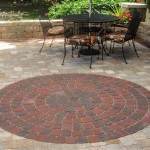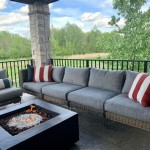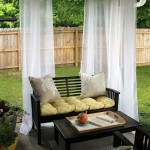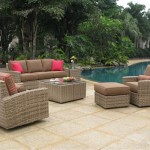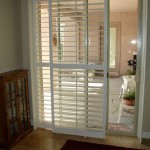Should You Cover Patio Furniture in the Winter in Illinois?
The question of whether or not to cover patio furniture during the winter months in Illinois elicits considerable debate among homeowners. The state's climate presents a challenging environment for outdoor furnishings, characterized by significant temperature fluctuations, heavy snowfall, ice storms, and persistent moisture. Understanding the impact of these conditions on various materials and the potential benefits of covering furniture is crucial for preserving its longevity and aesthetic appeal.
Illinois winters typically involve sub-freezing temperatures, often dropping well below 32 degrees Fahrenheit (0 degrees Celsius). These freezing temperatures can cause water absorbed by porous materials, such as wood and certain fabrics, to expand, leading to cracking, warping, and structural damage. Furthermore, the repetitive cycle of freezing and thawing can accelerate the deterioration process. Heavy snowfall places a considerable weight burden on furniture, potentially causing structural stress and damage, particularly to frames and support systems. Ice storms, while less frequent, can coat furniture in a thick layer of ice, which can also exert significant pressure and contribute to material degradation. The persistent moisture, whether from snow, rain, or humidity, fosters the growth of mold and mildew, which can stain and weaken furniture surfaces.
The decision to cover patio furniture should be based on several factors, including the type of material, the age of the furniture, the availability of storage space, and the anticipated weather conditions. Some materials are inherently more resistant to winter weather than others, while older furniture may be more vulnerable to damage. Adequate storage space allows for complete removal of furniture from the elements, eliminating the need for covers. Accurate weather forecasting can help homeowners anticipate severe conditions and take appropriate protective measures.
Understanding the Impact of Illinois Weather on Common Patio Furniture Materials
Different patio furniture materials react differently to the harsh conditions of an Illinois winter. A comprehensive understanding of these reactions is essential for making informed decisions about winter protection.
Wood: Wood furniture, particularly untreated or poorly sealed wood, is highly susceptible to moisture damage. The freezing and thawing cycle can cause the wood to crack, warp, and rot. Even treated wood can suffer damage over time if exposed to prolonged moisture. High-quality teak is a notable exception, as its natural oils provide inherent resistance to moisture and decay. However, even teak benefits from covering, as it helps to maintain its appearance and prevent the oils from drying out excessively. Covering wooden furniture is generally recommended in Illinois to ensure its longevity.
Metal: Metal furniture, especially wrought iron and steel, is prone to rust and corrosion when exposed to moisture. Powder-coated metal offers some protection, but scratches and chips in the coating can expose the metal to the elements, leading to rust formation. Aluminum furniture is more resistant to rust but can still be susceptible to corrosion and pitting, especially if exposed to salt. Covering metal furniture helps to protect it from moisture and salt, extending its lifespan and maintaining its appearance. Removing cushions and storing them indoors is also crucial to prevent moisture damage and mold growth.
Resin Wicker: Resin wicker, also known as all-weather wicker, is more resistant to moisture and temperature fluctuations than natural wicker. However, prolonged exposure to harsh winter conditions can still cause the resin to become brittle and crack. UV radiation from the sun, even in winter, can also degrade the resin over time. Covering resin wicker furniture provides protection from both moisture and UV radiation, helping to prevent cracking and fading.
Plastic: Plastic furniture is generally the most weather-resistant type, as it does not absorb moisture or rust. However, prolonged exposure to freezing temperatures can make plastic brittle and prone to cracking. UV radiation can also cause plastic to fade and degrade. While plastic furniture may not require covering as urgently as other materials, covering it can still extend its lifespan and maintain its appearance.
Fabrics and Cushions: Fabrics and cushions are particularly vulnerable to moisture damage. Waterlogged cushions can become breeding grounds for mold and mildew, leading to unpleasant odors and potential health hazards. Freezing and thawing can also damage the fibers of the fabric, causing it to weaken and tear. It is highly recommended to store cushions indoors during the winter months. If indoor storage is not possible, cushions should be covered with waterproof covers and stored in a dry, shaded area.
Benefits of Covering Patio Furniture in Winter
The advantages of covering patio furniture in Illinois extend beyond simple protection from the elements. Properly covering furniture offers a range of benefits that contribute to its long-term preservation and cost-effectiveness.
Protection from Moisture: As previously discussed, moisture is a primary enemy of patio furniture. Covers provide a barrier against rain, snow, and ice, preventing water from penetrating and damaging the furniture's materials. This is particularly crucial for wood, metal, and fabrics, which are highly susceptible to moisture damage.
Prevention of Mold and Mildew Growth: The damp conditions of winter create an ideal environment for mold and mildew growth. Covers help to keep furniture dry, inhibiting the growth of these harmful organisms. This not only protects the furniture's appearance but also prevents potential health hazards associated with mold and mildew exposure. Using breathable covers is important to allow for air circulation and prevent moisture from becoming trapped underneath, potentially exacerbating mold growth. Ventilation can be further enhanced by using furniture risers or small platforms to elevate the furniture slightly off the ground.
Protection from UV Radiation: While the sun may seem less intense during the winter months, UV radiation can still damage patio furniture over time. UV radiation can cause fading, cracking, and degradation of materials, particularly plastics and fabrics. Covers provide a barrier against UV radiation, helping to preserve the furniture's color and structural integrity. Selecting covers made from UV-resistant materials can further enhance this protection.
Prevention of Debris Accumulation: Winter winds can carry leaves, twigs, and other debris that can accumulate on patio furniture. This debris can stain and scratch the furniture's surfaces and can also contribute to mold and mildew growth. Covers prevent debris from accumulating, keeping the furniture clean and protected. Regularly inspecting and cleaning the covers themselves is also important to prevent the buildup of debris and maintain their effectiveness.
Extended Lifespan of Furniture: By protecting patio furniture from the elements, covers can significantly extend its lifespan. This reduces the need for frequent replacements, saving homeowners money in the long run. Investing in high-quality covers is a cost-effective way to protect a significant investment in outdoor furnishings.
Factors to Consider When Choosing Patio Furniture Covers
Selecting the right patio furniture covers is essential for maximizing their effectiveness. Several factors should be considered when making a purchase, including material, fit, breathability, and durability.
Material: Patio furniture covers are available in a variety of materials, each with its own advantages and disadvantages. Polyester covers are a popular choice due to their water resistance and durability. Vinyl covers are also waterproof but can be less breathable, potentially trapping moisture. Canvas covers are durable and breathable but may require waterproofing treatment. Breathable materials like polypropylene or specialized outdoor fabrics are often preferred to prevent condensation buildup under the cover.
Fit: A properly fitting cover is essential for providing adequate protection. Covers should be snug but not too tight, allowing for air circulation while preventing wind from blowing them off. Covers that are too loose can flap in the wind, causing damage to both the cover and the furniture. Measure the furniture carefully before purchasing covers to ensure a proper fit. Many manufacturers offer covers specifically designed for different types of patio furniture, such as chairs, tables, and sofas.
Breathability: Breathability is crucial for preventing moisture buildup under the cover. Covers that are not breathable can trap moisture, creating a humid environment that encourages mold and mildew growth. Look for covers with vents or breathable fabrics to allow for air circulation. Regularly lifting the covers to allow accumulated moisture to evaporate can also help prevent mold and mildew growth.
Durability: Patio furniture covers should be durable enough to withstand the rigors of winter weather. Look for covers made from heavy-duty materials with reinforced seams. Check customer reviews to assess the durability of different brands and models. Consider covers with UV protection to prevent fading and degradation from sunlight exposure.
Ease of Use: Consider how easy the covers are to put on and take off. Covers with zippers, buckles, or drawstrings can make installation and removal easier. Look for covers that are lightweight and easy to store when not in use. Proper storage of covers when not in use will prevent damage and extend their lifespan.
Making an informed decision about covering patio furniture in Illinois requires careful consideration of the specific materials, the anticipated weather conditions, and the available storage options. By understanding the potential impact of winter weather and selecting the appropriate protective measures, homeowners can preserve the beauty and longevity of their outdoor furnishings for years to come.

Winterproofing Your Outdoor Furniture Easy Tips

Outdoor Furniture That Can Survive Winter Best Fire

Outdoor Furniture That Can Survive Winter Best Fire

How To Winterize Patio Furniture The Cover Blog

How To Properly Patio Furniture Extra Space Storage

Best Ways To Cover A Patio Protect From Heat Cold And Rainpavestone Brick Paving

5 Backyard Patio Ideas For The Winter Months Prime Storage

How To Enclose Your Paver Patio During Winter Pavestone Brick Paving

We Talked To The Experts Our Guide For Patio Furniture That Can Be Left Outside During Winter Authenteak

Best Ways To Cover A Patio Protect From Heat Cold And Rainpavestone Brick Paving
Related Posts

